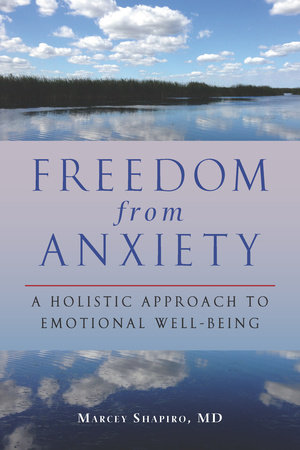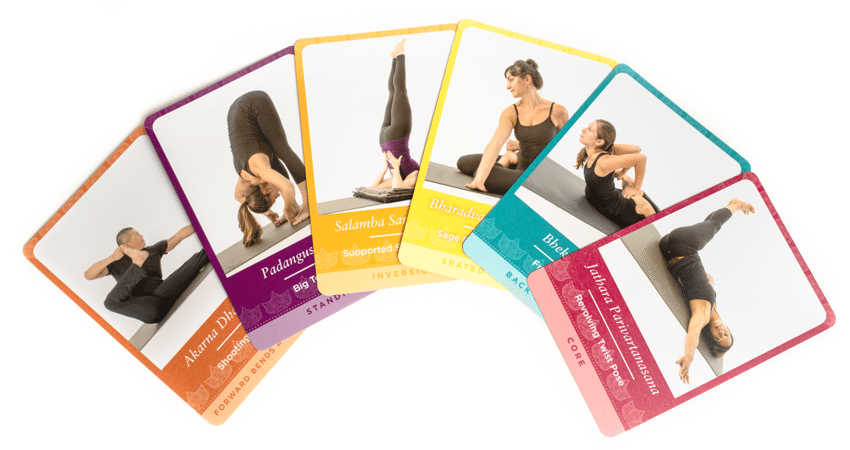
6 Essential Heart-Centered Breathing Exercises to Treat Anxiety
Categories: Health & Healing Psychology & Personal Growth
Dr. Marcey Shapiro writes:
It might seem obvious that breathing is essential to well-being, but it is rarely discussed in conventional medical contexts. Breathing is taken for granted, unless, of course, there is some specific ailment like asthma, pneumonia, or emphysema that impairs it. Numerous spiritual and health traditions offer a variety of breathing techniques, both for spiritual enhancement and health. Breathing techniques are among the most revered tools for centering in the heart and dwelling in a state of inner peace. They help us to center our consciousness in the here and now, so that we can more fully explore and dwell in the life force nourishing us in each present moment.They also help us connect with greater forces and tides in physical and spiritual realms.
In the yogic tradition, there is an entire branch of practice called pranayama devoted to conscious breathing techniques. Breathing techniques are taught in almost all yoga classes. The ancient yogis taught that learning to control the breath can assist in regulating and calming the mind. Many martial arts incorporate breathing techniques into the training. Proper breathing enhances focus, concentration, relaxation, and energy.
 In Freedom from Anxiety, Dr. Marcey Shapiro offers easy-to-learn breathing techniques that can be helpful for anxiety relief. In addition to awareness of breathing, deep abdominal breathing, conscioius breathing, square breathing, yogic three-part breath, alternate nostril breathing, and chakra breathing, Shapiro recommends the following heart-centered breathing exercises.
In Freedom from Anxiety, Dr. Marcey Shapiro offers easy-to-learn breathing techniques that can be helpful for anxiety relief. In addition to awareness of breathing, deep abdominal breathing, conscioius breathing, square breathing, yogic three-part breath, alternate nostril breathing, and chakra breathing, Shapiro recommends the following heart-centered breathing exercises.
Tags: Biography & Memoir Chinese Medicine & Acupuncture Marcey Shapiro Yoga1. Basic Heart-Centered Breathing
One of my goals in writing Freedom from Anxiety is to help readers develop confidence allowing the heart to guide their decisions and actions, i.e., that they feel secure knowing their connection with intuition is a wise one. This series of exercises helps people to center in their hearts, facilitating improved communication between the heart and the mind. This is one way we can cultivate a “wise heart and a loving mind.”*
The simplest form of heart-centered breathing is a variation of basic awareness of breath. It is very helpful for agitation. Begin with basic breath awareness. After a few relaxing breaths, bring your awareness to your heart. Now imagine, as you breathe normally, that your breath is flowing in and out through the heart or breastbone. Let your breath be relaxed, natural, and easy. Take several breaths energetically linking the flow of breath into the heart and out from the heart. Of course, you are physically breathing in and out through your nose or mouth. In these exercises, imagining breathing in through anatomical areas like the heart or the top of your head refers to an energetic flow that accompanies the breath.
You can do this technique with breath alone. A variation that is useful for any of the heart or chakra breathing exercises is to think of a soothing word such as ease, calm, freedom, peace, or love. Choose one word that you like, and with each inhalation and exhalation, breathe the soothing word into your heart, then breathe it out. Imagine the calming words flowing into and out from your heart with the tides of your breath. Ease in, ease out, love in, love out, freedom in, freedom out, peace in, peace out, calm in, calm out. Notice how this steadies and slows the heart rhythm when you are agitated, and strengthens feelings of centered well-being when you are happy.
2. Head/Heart Breathing
This is another technique that can help us release our focus upon the constant patter of thoughts, by relaxing into a quieter, heart-centered awareness. Begin with basic heart-centered breathing. After a few breaths, shift focus and imagine inhaling through the top of your head and exhaling through your heart or breastbone. Breaths can be normal, or slightly deeper than normal. Do at least three breaths this way, and as many more as you like.
3. Heart/Upper Abdomen Breathing
This technique can be excellent for quelling anxiety, especially “butterflies” in the stomach and nervous digestive disturbances. Begin with either of the heart-centered techniques above. Next imagine that your breath is flowing in through your heart and out through your solar plexus, the area of your stomach in your upper abdomen. All breaths are gentle and natural. Take several breaths in through the heart and out through the stomach.
As a variation, you can go back and forth between the stomach and the heart. Breathe in through your heart and out through your solar plexus, then in through the stomach and out through your heart. Do at least six breaths in this pattern. Many people find this very calming and relaxing and will preferentially perform a few repetitions of this breath when stress begins to mount. I often utilize this pattern when I feel tension or strain, including when I need to share potentially upsetting health diagnoses with my patients. Breathing in this manner helps me to stay centered and compassionate.
4. Heart/Lower Abdomen Breathing
Breathing between the heart and lower abdomen may help with feeling more grounded, embodied, and connected to the earth. This technique may be done after the previous heart-centered breaths, in a sequence, or performed alone.
When doing this as a stand-alone exercise, begin with a few basic heart-centered breaths. Next, breathe in through your heart and out through your lower abdomen, below the navel. Repeat at least three times.
When performing this in a sequence with other techniques, do each of the above breaths three to ten times, one after another. Follow this sequence with three to ten breaths in through your heart and out through your lower abdomen, below the navel. This last step may be performed along with deep abdominal breathing, or done as an energetic flow of normal breath. Relax and enjoy this sequence. If there are any types of breath that you do not like or find difficult, just skip them.
5. Heart/Health Breaths
You can breathe between your heart or a chakra and any anatomical area of concern or discomfort. For example, if you have a sore knee, a shoulder injury, or even a serious illness like breast or prostate cancer, imagine breathing love and light into the affected area and releasing this breath through the heart. Then reverse the flow to send the insight and love of the heart to the area that is exhibiting an imbalance. In this case, it is best not to think of your health concern as a “problem.” Instead, you might reframe this and consider it an area where there is misunderstanding between the physical you and the emotional or spiritual you.
Many people find breathing between an area of misunderstanding and the heart very soothing. It may also help with insight that can expedite healing of the situation. If you try this technique and no insight comes right away, don’t fret. These breaths can help you feel calmer and improve your self-awareness. By doing the breathing exercises, you are augmenting the energetic flow of communication between your heart and the affected region. The details of information or insight may come later.
Be creative and have fun with these techniques. Feel free to expand on any of them, perhaps including more than two areas. For example, if you have an unresolved hip pain, you might try breathing in a triangle between the hip and heart, heart and third eye, and third eye and hip. This connects the heart, area of concern, and the intuition and can be a wonderful catalyst for inspiration. If you do this, it may be helpful to pay attention to dreams and subtle impressions that you might perceive over the next few days.
6. Joy Breathing
In Traditional Chinese Medicine there is an emotion associated with each organ and meridian. The emotion of the heart is joy. I have found that joy breathing is wonderful for nourishing well-being, especially after a calming sequence of heart-centered breaths has cleared away mind chatter and worry.
To perform joy breathing, think of something that gives you pure joy. This can be a person, place, thing, memory, or expectation, but a mix of emotions should not encumber it. It can be a small vignette, or a single image or event. The thought should give you good feelings, like falling in love. For me, it is easy to think of my small niece and nephew and have those sorts of feelings. A moment of appreciation of my spouse, Star, can do it too. As an opera buff, I can also think of the “Flower Duet” from Lakme or several other sublime pieces of music and feel the love. Remembering a gorgeous sunset, the chevron flight of geese, or a waterfall can elicit a swell of joy. Think of whatever creates that feeling for you, after you have relaxed with a flow of heart-centered breathing. Breathe feelings of joy into your heart, and breathe them out. Bask in the well-being, enjoying several joy breaths.
*This is a phrase from an Orin meditation.



